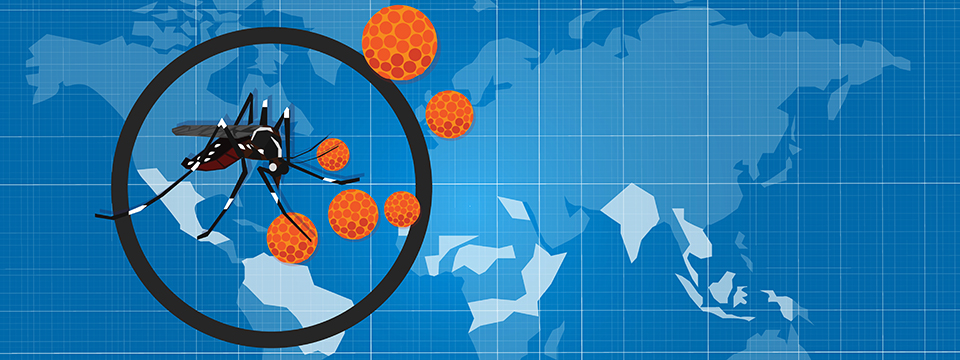
Taking a Look at Zika
Media attention to Zika virus and its links to adverse pregnancy and birth outcomes has been almost at a fever pitch the last few months.
Cases in South America have cited a series of serious brain anomalies in fetuses and newborns and are supported by evidence that Zika virus infection during prenatal development are consistent with the defects observed. Health specialists are advising women to delay pregnancy in areas where the virus is circulating.
And with the Summer Olympics planned for Brazil this summer, many tourists are deciding not to attend and athletes are questioning their participation as the outbreak has reached pandemic levels.
The media attention may have been a recent phenomenon, but Dr. Brad Blitvich, associate professor of veterinary microbiology and preventive medicine at Iowa State University, is well familiar with Zika and its effects.
Blitvich specializes in arthropod-borne viruses and their mosquito vectors. He has studied West Nile virus and Cache Valley virus on human and veterinary animal health in the United States and Mexico. Humans and animals are initially infected through mosquitos, just like the Zika virus.
Six years ago, Blitvich first started studying the Zika virus when he was a co-author on a paper that was the first to describe evidence of sexual transmission of the Zika virus between humans.
Blitvich says a vast majority of Zika virus infected individuals (80%) show no symptoms while the other 20 percent usually experience symptoms such as fever, muscle pain, joint pain or headache for about two weeks before making a full recovery. The significant problem observed is when the virus is passed between an infected mother and her unborn child. The result are increased numbers of infants who develop microcephaly and other severe brain anomalies.
“I’ve spent my entire research career studying mosquito transmitted viruses,” he said, “and the Zika virus is a natural extension of this project.”
For the last six years, Blitvich was been more focused on West Nile and other mosquito-borne diseases. With the new documented cases, he is looking more into Zika. He has recently submitted a grant application to the National Institute of Health to work with collaborators in Mexico to further study the virus.
The study would monitor pregnancy outcomes and attempt to understand the health impact of those individuals with a fever caused by the Zika virus.
The Zika virus was first identified in the 1940s and, until recently, was occurred only within a narrow equatorial belt from Africa to Asia.
“The world is getting smaller and our population is getting bigger,” Blitvich said. “Humans are encroaching onto wildlife habitats due to globalization and the amount of air travel has increased dramatically in the last few decades making it easier for viruses such as Zika to move from country to country.”
Blitvich says it just takes one infected mosquito to move into a new area but because of the type of mosquito that transmits Zika virus, it is only found in tropical and subtropical areas. In the United States, that’s Florida, Texas and other regions in the South.
“The mosquito species that transmits Zika virus is not found in Iowa so there is almost a zero percent chance of someone in Iowa becoming infected with Zika virus by mosquito bite,” he said. “But I am almost certain that Zika virus is here to stay in the Western Hemisphere.”
